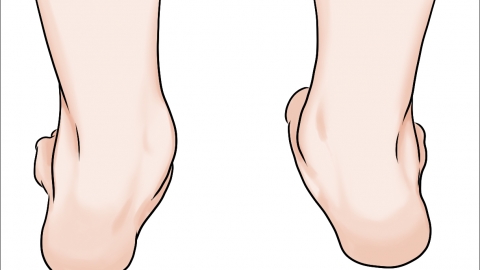How to treat flat feet in a 13-year-old adolescent
Under normal circumstances, flat feet in 13-year-old adolescents may be caused by delayed arch development, weak foot muscles, plantar fasciitis, Achilles tendinitis, or congenital foot bone deformities. It is recommended to seek medical attention promptly, identify the underlying cause, and then improve the condition under a doctor's guidance through general treatments, medications, surgery, or other methods. The specific analysis is as follows:

1. Delayed arch development: Some adolescents experience delayed foot arch development and have not fully formed their arches by age 13, resulting in complete contact of the sole with the ground when standing. Daily foot exercises such as picking up towels with the toes, walking on tiptoes, wearing athletic shoes with arch support, and avoiding prolonged walking or standing can help promote normal arch development.
2. Weak foot muscles: A lack of long-term physical activity can lead to insufficient strength in the foot muscles, making them unable to adequately support the arch, thus causing flat feet and easy fatigue during walking. Daily foot muscle training, such as rope skipping and climbing stairs, should be maintained. Under medical guidance, orthopedic insoles may also be used to provide external support, strengthen muscle power, and improve arch shape.
3. Plantar fasciitis: Repeated strain and injury to the plantar fascia can trigger inflammation, worsening symptoms of flat feet and causing obvious pain in the sole while walking. Patients should follow medical advice to use medications such as celecoxib capsules, diclofenac sodium sustained-release tablets, or ibuprofen sustained-release capsules to relieve pain.
4. Achilles tendinitis: Chronic tension or injury to the Achilles tendon causes inflammation, affecting weight distribution in the foot and leading to or exacerbating flat feet, often accompanied by significant tenderness at the heel. Patients should take anti-inflammatory medications such as naproxen sodium tablets, etoricoxib tablets, or loxoprofen sodium tablets as prescribed by a physician.
5. Congenital foot bone deformity: Abnormal development of foot bones from birth—such as poor development of the navicular bone—can result in structural abnormalities of the arch and cause flat feet, with symptoms typically persisting over time. If conservative treatment fails, surgical options like navicular osteotomy may be considered after medical evaluation, which involves repositioning the foot bones to correct arch structure. Post-surgery, corrective braces are required to aid recovery.
In daily life, maintaining a healthy weight is important to avoid excessive load on the feet. Low-impact exercises such as swimming and cycling are recommended to enhance overall lower limb strength. Regular follow-up evaluations of foot development should be conducted, and treatment plans adjusted according to progress, to maintain foot health and ensure normal walking function.




